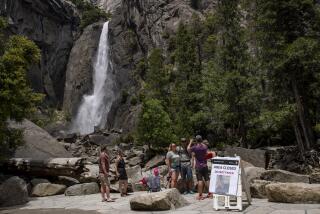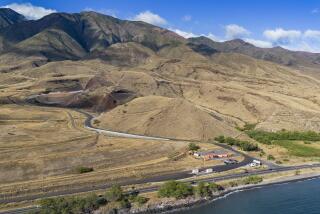Kilauea’s eruption is reshaping Hawaii Volcanoes National Park. Say goodbye to the popular lava lake

Fissure 8 continues to be a source of molten lava that flows to the Pacific.
When Hawaii Volcanoes National Park fully reopens to visitors, it will look drastically different. The recent quakes and lava flows from the Kilauea volcano are reshaping the landscape of the park. Tourists can say goodbye to one of the most popular draws: the flow of red-hot magma spewing to the surface at the volcano’s summit.
“You could drive up to the [Jaggar Museum], get out of your car, walk to the overlook, and view a beautiful lava lake overflowing,” park superintendent Cindy Orlando said. “That was an incredible visitor experience, and you really didn’t have to work real hard to get it.”
With the recent volcanic activity, that lava lake has receded underground. It is now sealed off by countless tons of rock that have fallen into the caldera as portions of the surrounding Halemaumau Crater continue to collapse.
“Will it [the lava lake] ever happen again? Probably, but not in my lifetime,” Orlando said.
The most-visited two-thirds of the national park have been closed since May 4, when seismic and volcanic activity forced the evacuation of tourists and employees.
“We’re in limbo. We have had 7,000 earthquakes in the last 30 days,” Orlando said.
Adding to the park’s uncertain future is the danger posed by ongoing lava eruptions that have consumed hundreds of homes near the park in the southeast part of the Island of Hawaii.
Beginning in 2008, after a 40-year absence, the lava lake at the heart of Kilauea volcano began belching red-hot molten rock into the sky. After-dark visits to the now-off-limits Jaggar Museum allowed tourists awe-inspiring views of nature’s powerful forces at work.
The Jaggar Museum and the U.S. Geological Survey’s Hawaiian Volcano Observatory are located on the crater’s crumbling rim.
“Our offices are not imminently in danger of collapsing into Halemaumau,” geologist Ingrid Johanson said. “We are concerned about the stability of that cliff that they are located on, but we don’t expect them to be part of these large collapsed blocks that are falling into the crater in the near future.”
“Jaggar Museum, on the edge of the crater, I can’t tell you if that will ever open again,” Orlando added. “That entire area is extremely fragile, cracking, collapsing.”
“With that said, are there other areas of the park that we can look at reopening that present a much lower risk?” the park superintendent said. Orlando pointed to a scenic overlook along the park’s eastern edge, which she said could provide a good vantage point for lava viewing.
When will visitors be allowed to return to the park? “We’re not there, by any means, because if we invite people in, we have to be able to take care of them [in an emergency],” she said.
“I haven’t heard anything from them [the USGS] that would lead me to believe we’re over the hump yet,” Orlando said. “What I heard from them ... was that this [increased activity] could go on for years.”
Orlando said eventually the visitor center will be reworked to explain the latest series of park-reshaping events. And it is expected there will be a yet-to-be-determined viewing spot for the greatly enlarged crater.
“It’s honestly jaw-dropping,” said Johanson, who has flown over it in recent days. “It really is kind of awe-inspiring to see the major changes that have happened to Halemaumau Crater in a relatively short period of time.”
The spewing lava has formed an 8-mile red river that leads into the Pacific Ocean.
And new land, 380 acres, has been created from lava that filled a relatively shallow bay formed by a now-buried coral reef. The mass of hardened lava is the size of more than 292 football fields.
“The newest land on earth came at a price none of us would have paid,” Orlando said.
The best ways to view the lava flow are by air and sea. Various tour companies offer helicopter flights and boat trips, although there may be government-imposed restrictions depending on volcanic activity and the weather.
ALSO
Las Vegas buffets are legendary — and now, reinvented. Here are four offering fresh takes
In Kauai, where to eat for cheap: 20 places to chow down for $20
More to Read
Sign up for The Wild
We’ll help you find the best places to hike, bike and run, as well as the perfect silent spots for meditation and yoga.
You may occasionally receive promotional content from the Los Angeles Times.






